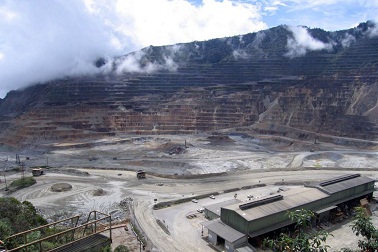
When a disaster, natural or manmade, occurs in the environment, it can have far-reaching consequences. This was the case with the Ok Tedi Mine incident that occurred in the late 90s. Will it compel the industry to change some of its practices?
The Mining Industry
Mining goes on in all parts of the world and has done for many years. It is designed to remove precious resources from the earth. Unfortunately, these minerals and other products are not easy to get at and companies use various techniques for the process.
There is another downside to mining. Many accidents and deaths do occur in this industry. Cave-ins, illness from breathing harmful fumes and accidents on the job account for thousands of deaths. Even with better safety protocols, the environment is damaged in some way through the processes used.
The Ok Tedi Mine: The Disaster
The Ok Tedi mine is located in Papua New Guinea. It was created to mine gold and copper from the mountain. The mine was run by the Ok Tedi Mining Limited and BHP Billiton. Once all the gold was mined, they found out that there was a rich copper deposit below, possibly the largest in the world.
Several incidents plagued the operation. A dam was supposed to be built near the mine for tailings. Tailings are the waste from the mining industry’s operations. They are supposedly non-toxic and harmless. The dam would allow the heavy metals and solids in the tailings to settle out before the cleaner high water was released into the river.
An earthquake damaged the dam in progress so it was abandoned. The government agreed that operation of the mine could continue without it because of costs. A waste retention facility was also not built near the mine to hold waste products.
As a result of all of this, about 80,000 tons of tailings were discharged into the Ok Tedi River almost on a daily basis. There was also overflow into the Fly River as well. Years later the BHP Company admitted that they damaged the environment surrounding the Ok Tedi Mine severely with their waste dumping practices.
The Aftermath
As a result of the dumping, a layer of waste solids settled in the bottom of the river. It poisoned the fish species leading to their eradication. This affected the lives of nearly 50,000 people living in over 120 villages along the Ok Tedi and the Fly Rivers. The dumping also slowed the movement of the rivers causing problems with travel and commerce traffic conducted there.
The settlement also caused the riverbed bottom to be raised, leading to an overflow of the river. The river overflowed its banks and poisoned the land to the tune of about 500 square miles. This affected the livelihood of farmers who grew taro, sago palm and other native crops. The land will be damaged for many years to come.
The Ok Tedi disaster demonstrates how big business can damage environments around their sites when certain safeguards are not implemented. How can we avoid such disasters from continuing to ruin our world?
Image Courtesy of: ABC News

